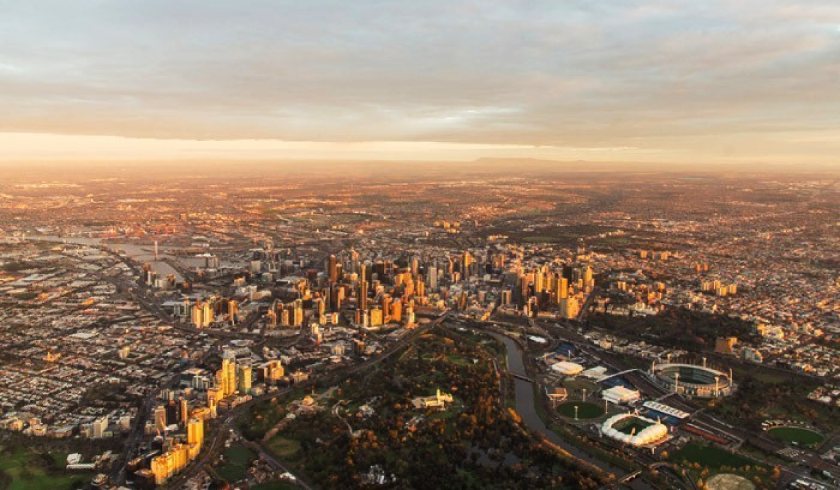

PROPERTY INVESTMENT
Capital city dwelling values surged by more than 20% over 2021, while in the regions, median home prices increased by 25%.
While the escalation of Australian house prices is a widely reported phenomenon, understanding past episodes of growth gives us insight into just how remarkable this period has been – and what might come next.
Using the work of Nigel Stapledon, who pieced together records of property sales in Sydney and Melbourne from newspaper records, we can get a view of Australian dwelling prices from the period before federation.
On this timeline, units are a relatively modern addition to the housing stock, so we stick to and analyse house prices.
After accounting for general price inflation, we can see the price of houses didn’t change much throughout Australia’s early history.
It wasn’t until the 1950s that prices started to increase relative to other goods.
Prices rose gradually at first, and then since the late 1990s began a period of very strong growth.
It is useful to understand how the housing market has changed along this very long timeframe.
Before the 1950s, land on the fringes of urban cities was both close to CBDs and relatively cheap, which kept a lid on house prices.
Once land close to cities became more scarce, along with the high levels of immigration into Australia in the 50s, 60s and 70s, prices started rising at a faster rate.
But price rises were modest compared with recent history, as higher demand was partly matched by improvements in transportation technology – car availability and the growth of tram and train networks – which allowed more accessibility to further-flung suburban fringe regions.
Annual growth in these long-term prices highlights some interesting periods in Australia’s housing market.
The past year now ranks as the third-fastest episode of annual price growth on record.
Looking at the highest episodes of price growth provides some comparison for how extraordinary the past year has been, and may give some insight into what might follow in the coming period.
Wartime powers brought rents and house prices under the control of the Commonwealth during and after the Second World War.
Under these powers, houses could only sell for 10% above the value provided by an approved valuer.
With consumer prices rising by around 30% between 1942 and 1949, approved values failed to keep up with the underlying market.

Australia has developed rapidly, as this image of Broadmeadows in the 1950s and in present day shows. Picture: Urbis
The government called a referendum in 1948 to amend the constitution and grant permanent powers to control rents and prices – but when that was defeated, price controls were repealed in 1949.
In 1950, with no more controls, prices doubled – but this represents a one-off ‘catch-up’ for the falls in inflation-adjusted prices throughout the 1940s.

An image of the front page of the Real Estate Guide from 1965 showing homes for sale in Maroubra, Ashfield, Caringbah and Beverly Hills in Sydney.
Inflation-adjusted house prices were fairly stable throughout the 1970s and 1980s – but in the late 80s, prices boomed.
The proceeding decades represented significant deregulation of the finance industry in Australia.
Large innovations, such as the removal of limits on the interest rates that could be paid on deposits and charged for loans, the floating of the Australian dollar, and the introduction of competition from foreign banks significantly modernised the sector.
These changes spurred improved access to credit and helped facilitate the housing price boom at the end of the decade.

Sydney’s skyline as seen in 1984 in this image of HMAS Sydney. Picture: Royal Australian Navy
This price growth culminated in a financial crisis, where banks lost significant amounts of money and two failed entirely.
But these losses were primarily due to commercial property, rather than residential real estate.
Losses on these assets exceeded 50 per cent. These losses brought about a financial crisis and recession, which weighed on house prices in the following years.
PropTrack data for the September quarter of 2021 suggests capital city house prices grew by 22% over the past year in inflation-adjusted terms.
This is the third-fastest episode of house price growth in Australia’s history.
The past year has certainly been unique to the two episodes of faster house price growth.
After falling initially after the onset of the COVID-19 crisis, prices have shot up sharply.
Exceptionally low borrowing costs, as well as the ability for more people to work from home, have driven both generalised price increases across the country and put particular pressure on regional areas.

Prices in Australia’s capital cities skyrocketed in 2021, but will that growth continue?
The previous episodes of very strong price growth have been followed by price falls.
While property prices are notoriously difficult to forecast, it is hard to see the same downturns befalling the current market, at least in the near-term.
The outlook for price growth in the coming period appears solid, if unlikely to be as exceptional as we’ve seen over the past year.
While the large number of property listings, particularly in Sydney and Melbourne as they come out of the most recent lockdowns, may put some downward pressure on prices, there remains a very high number of buyers in the market on realestate.com.au waiting to find their new home.
The Australian Prudential Regulatory Authority has implemented some tightening of credit conditions, but overall borrowing conditions remain very favourable.
And the Reserve Bank recently reaffirmed its expectations that interest rates would not rise for another two years at least.
Who knows what the next 140 years of the Australian housing market may hold.
